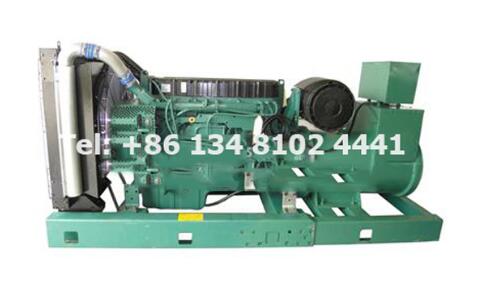Understanding Diesel Generator Efficiency
When it comes to reliable and continuous power supply, diesel generator sets play a crucial role. These generators are widely used in various industries, commercial establishments, and as backup power sources. One key aspect that determines the performance of a diesel generator set is its efficiency.
1. What is Efficiency in the Context of Diesel Generators?
Efficiency, in the context of a diesel generator set, refers to the ratio of useful electrical output generated by the generator to the energy input provided to it. It is a critical parameter that reflects how well the generator converts fuel into electrical power.
2. Factors Influencing Diesel Generator Efficiency
2.1. Engine Design and Quality
The efficiency of a diesel generator set is significantly influenced by the design and quality of its engine. Modern and well-engineered diesel engines tend to have higher efficiency levels, ensuring optimal fuel combustion and power generation.
2.2. Generator Size and Capacity
The size and capacity of the generator also play a role in its efficiency. Matching the generator size to the load requirements is crucial. Running a smaller generator at high loads or a larger generator at low loads can result in lower efficiency.
2.3. Fuel Quality
The quality of the diesel fuel used directly affects the efficiency of the generator. High-quality, clean fuel ensures better combustion and, consequently, higher efficiency. Regular fuel quality checks and using fuel filters are essential practices to maintain efficiency.
3. Measuring Efficiency
Efficiency is typically expressed as a percentage and is calculated using the formula:
Efficiency (%) = (Electrical Output / Energy Input) * 100
Measuring efficiency allows operators to assess the performance of the diesel generator set and make adjustments for optimal operation.
4. Importance of High Efficiency
High efficiency in a diesel generator set brings several advantages. Firstly, it results in lower fuel consumption, reducing operational costs. Secondly, it contributes to a lower environmental impact by minimizing emissions per unit of power generated. Lastly, high efficiency ensures a reliable and stable power supply, critical for various applications.
5. Regular Maintenance for Sustaining Efficiency
Maintaining the efficiency of a diesel generator set requires regular and proper maintenance. This includes periodic checks of engine components, fuel system, cooling system, and electrical connections. Routine inspections help identify issues early, preventing a decline in efficiency.
6. Conclusion: Ensuring Reliable Power Generation
In conclusion, understanding and optimizing the efficiency of a diesel generator set is essential for ensuring reliable and cost-effective power generation. Regular maintenance, monitoring fuel quality, and selecting the right-sized generator contribute to achieving and sustaining high efficiency.
For inquiries about diesel generator sets or to find a reliable supplier, please do not hesitate to contact us. Our dedicated team is ready to assist you in sourcing the right diesel generator set that meets your specific needs and efficiency requirements.

Comments
Post a Comment